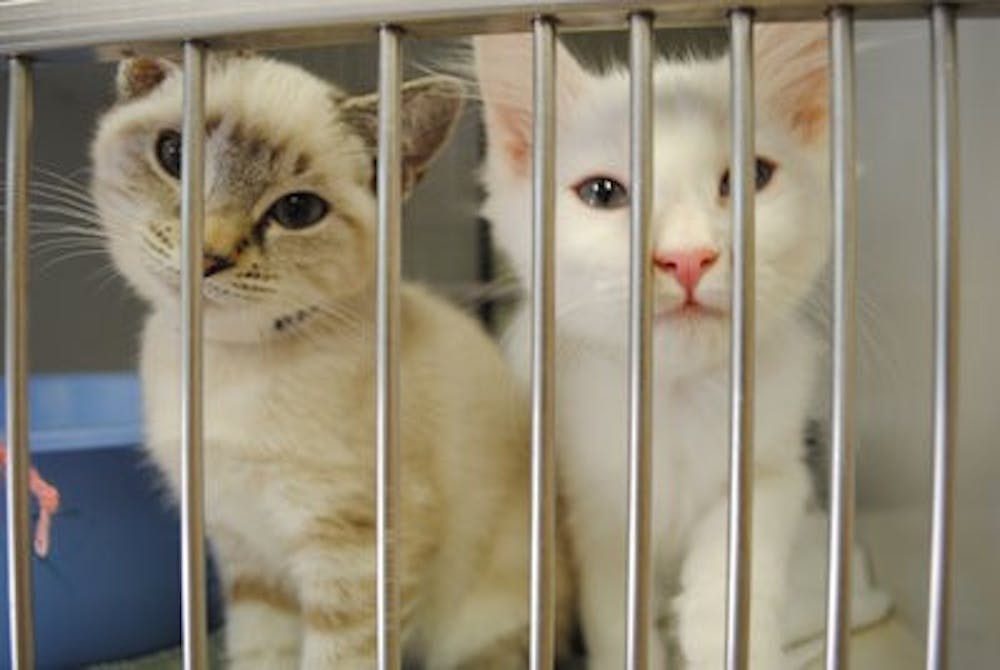They mostly come out at night, creeping around bushes and darting around lone walkers.
No student walks the campus for any length of time without seeing part of the sizable population of feral cats.
"What people need to understand is it's a human-made problem," said Tara Lanier, head of media relations for the College of Veterinary Medicine. "It's the responsibility of the pet owner... not to abandon animals."
From 1999 to 2008, the vet school ran a program to monitor the feral cats on campus.
Operation Cat Nap, as it was called by its creator, assistant professor Brenda Griffin, attempted to control the cat population by spaying and neutering captured cats delivered to the school.
"You may have seen cats walking around on campus that are missing the tip of their ear," said Pat Rynders, associate director of the veterinary college. "That's how we identified them as having been through that program."
Participants in the program not only spayed and neutered feral cats, but gave them vaccinations for rabies, feline leukemia and feline distemper.
Students also set up feeding stations for colonies of cats.
A colony consists of at least three adult cats living and feeding in proximity to each other, but they can grow much larger.
Several years ago, a graduate student checked up on feeding stations and discovered lax feeding schedules left these groups of cats without a consistent source of food.
Because the cats had grown dependent on humans for food, the inconsistency posed a serious risk to the colonies.
That downturn in reliable participation led to the end of Operation Cat Nap in 2008.
"The problem on campus is that you've got a fairly transient group of people who are involved," Rynders said. "Oftentimes, the students will go on vacation, or they graduate, and it leaves a hole in the care program."
Now, the campus leaves the tipped cats on campus, while any new strays are taken to the Lee County Humane Society for adoption.
Cats with acceptable behaviors are placed for adoption, but some cats are just too wild, forcing the Humane Society to put them down.
"We do practice humane euthanasia here, and that's just because we have such a bad overpopulation problem in our community," said Stacee Peer, director of public relations and development at the Lee County Humane Society. "That's just a sad thing, and we always try to remind people to have their pets spayed and neutered because that's the only way it's ever going to get better."
By leaving colonies of strays on campus, the vet school not only avoids burdening the Humane Society with even more cats, but also accomplishes two important goals.
One, they introduce vermin control. Two, the spayed and neutered cats set up and defend territories from cats that can reproduce.
In an effort to control wild cat populations, students should remember that just because they can handle a pet now doesn't mean they can in a year or even a semester.
"I try to remind college students to think about your living situation," Peer said. "Right now, you may live in a place where pets are allowed, but I know students often have lots of transitions."
The Humane Society has taken steps to ensure responsible ownership by instituting a stricter application process, including meetings with pet counselors, but ultimately, it is the duty of the owner.
"Nobody's going to feel badly toward someone who can no longer keep an animal, but they do need to do the responsible thing," Rynders said, "and the more responsible thing is to take that pet to the shelter, where it stands a chance of being adopted rather than turning it out loose."
Do you like this story? The Plainsman doesn't accept money from tuition or student fees, and we don't charge a subscription fee. But you can donate to support The Plainsman.




